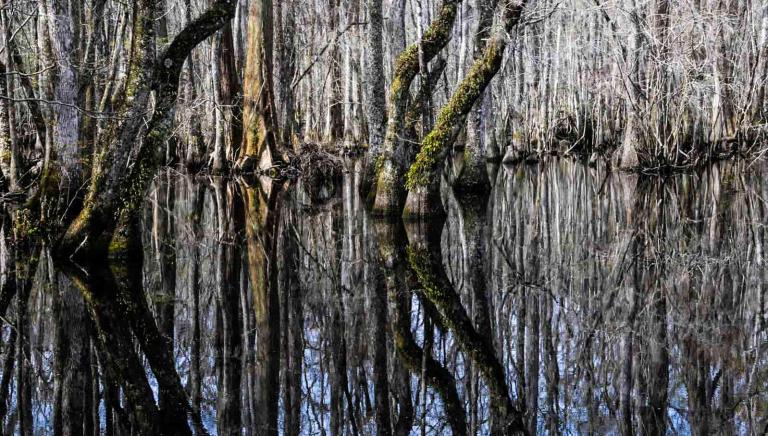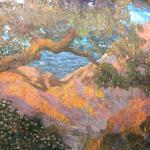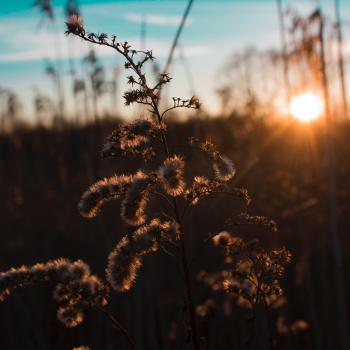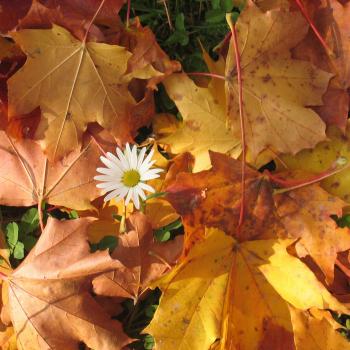Beidler Forest
I felt I was walking back in time
although it was only yesterday.
The hush was humbling,
everywhere mirrors of tupelo knees, cypress
spreading mighty skirts in tannin-blackened water,
leaning as if today had not happened.
We were tourists, there to see Four Holes Swamp,
not an attractive name, but compelling nonetheless,
and beautiful it was, this swamp, which is nothing other
than a flooded forest. A sign told us one bald cypress
lived for a thousand years and I felt
I was walking back in time
although it was only yesterday.
We were tourists only, tourists tramping on a boardwalk
through a world so haunted by tomorrow
I could barely stand.
My husband chronicled with his camera
the red-bellied snake slithering over a fallen log,
the turtle glorious green drenched in sun,
the flat-footed water spider skittering between the boards,
the staring barred owl, magnificent in her patience—
all of them indifferent to us who barely breathed
in their presence. We were tourists
who stumbled upon a hidden chamber
independent of dawn and dusk,
stunning in its grace and sufficient in its harmony.
***
We were driving up Interstate 26 northwest of Charleston when we saw a sign for Audubon’s Francis Beidler Forest.
“What’s this?”
We swung off the interstate to investigate and were rewarded with a memorable wildlife sanctuary, which the Audubon Society calls “the world’s largest virgin cypress-tupelo swamp forest—a pristine ecosystem untouched for millennia.” We paid our fee and began walking the 1.75-mile boardwalk that took us into an ethereal world of thousand-year-old cypress standing like proud old women in long skirts not about to be bowed by age.
Not at all a marshy, messy swamp as I had expected, Four Holes Swamp was filled with pristine-looking, transparent blackwater colored by tannins from the breakdown of vegetation. It is a flooded forest, the water the color of coffee or black tea. We fell silent among occasional mellifluous songbird calls.
We learned that Four Holes Swamp is part of a 45,000-acre chain of blackwater sloughs and lakes. Old-growth Beidler Forest, untouched by axes and chainsaws, numbers 18,000 acres within the swamp. Slow-moving blackwater flows through it for 60 miles on its way to Edisto River.
Swollen bases help tupelo and cypress keep their footing. When roots live in mud, they need stabilization, especially when hurricanes strike. The bulbous bases may help them breathe and help anchor them, according to Tulane.edu.
Even more interesting to me were the cypress and tupelo knees, protuberances that scientists haven’t quite figured out. They may help with aeration; they may help provide further stabilization. Scientists call the similar adaptation of the cypress and tupelo trees to their watery environment “convergent evolution,” says Tulane.edu.
Our walk through Beidler Forest was stunning in its beauty, and heartbreaking when I think of the future.
The Audubon Society describes Beidler as “thriving and fragile.” A 2014 Audubon study concludes that half of North American birds are threatened by climate change and loss of habitat.
The work at Beidler includes providing shelter for birds as seas rise and weather patterns shift, according to sc.audubon.org/beidler-forest. These safe spots for birds, called “climate strongholds,” provide the appropriate habitat for them now and for species who may seek shelter there in the future.
I’m not a scientist, and I have no pull with worldwide organizations that can make a perceptive difference. I’m a poet, so I wrote a poem about Beidler Forest and a book of poems about Mother Earth and the challenges she faces. But what more can I do?
Plant a tree?
Native plantings provide food for birds, save water and fight climate change, the Audubon Society says. My husband and I live in rural southwestern Michigan on a couple of acres. We discovered we can enter our zip code at Audubon.org/native-plants to find a list of plants native to our area. This spring, we will plant more native, bird-friendly trees and shrubs such as serviceberry and dogwood.
Native plantings seem like just a little thing, like recycling, shutting off lights, putting up birdhouses, eating no or less red meat, cleaning the toilet with baking soda, bringing cloth bags to the grocery store, consolidating errands or using mass transit, turning off your vehicle while waiting in line to pick up your kids at school. Or carefully considering how many kids to have because a burgeoning population threatens our planet.
But, when millions, even billions of people act in ways that respect Earth, our home, little things mean a lot.
Visit Nan, author of a book of poems, Gaia’s Cry, at nanlundeen.com. Photo by Ron DeKett.


















